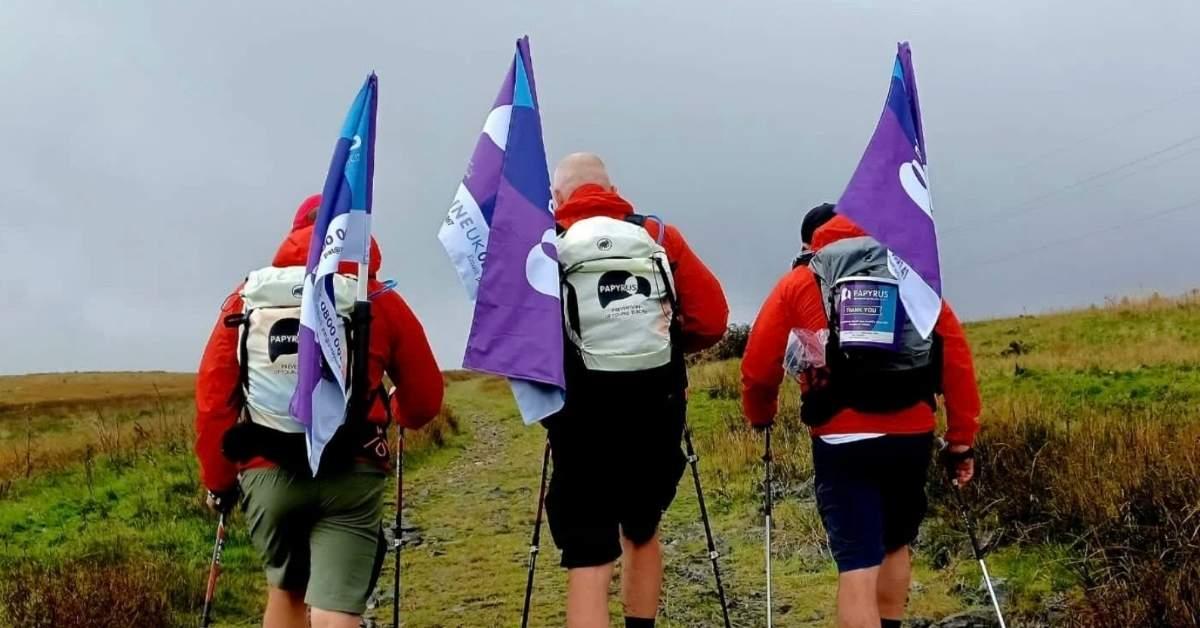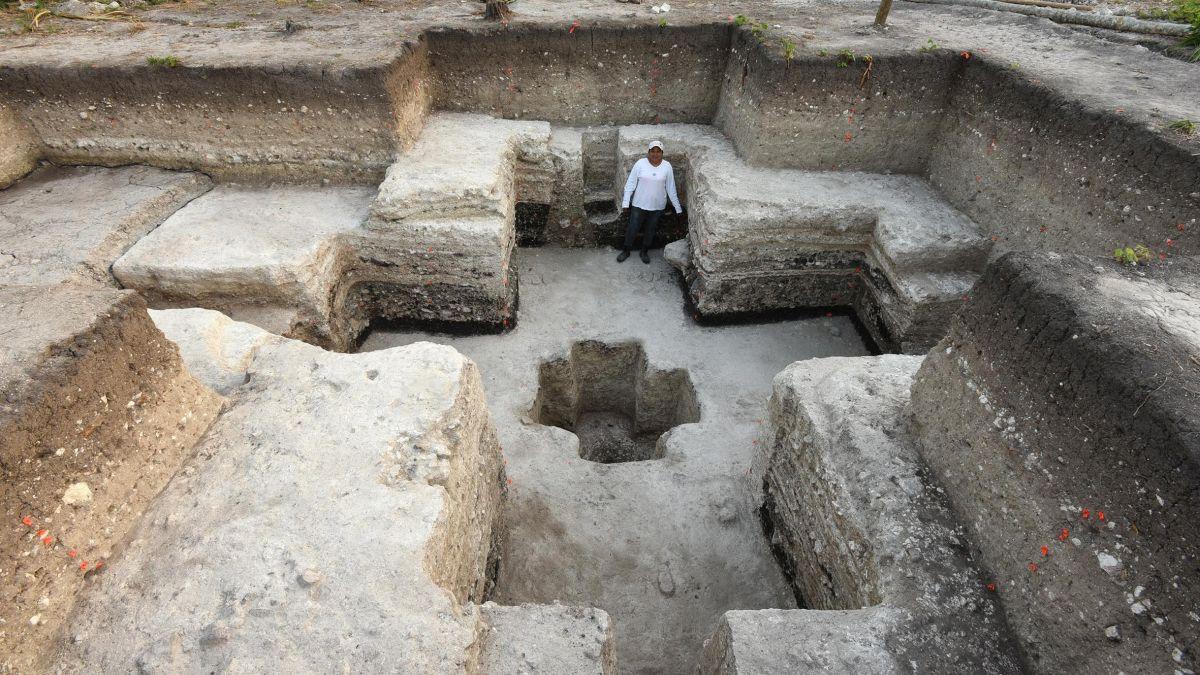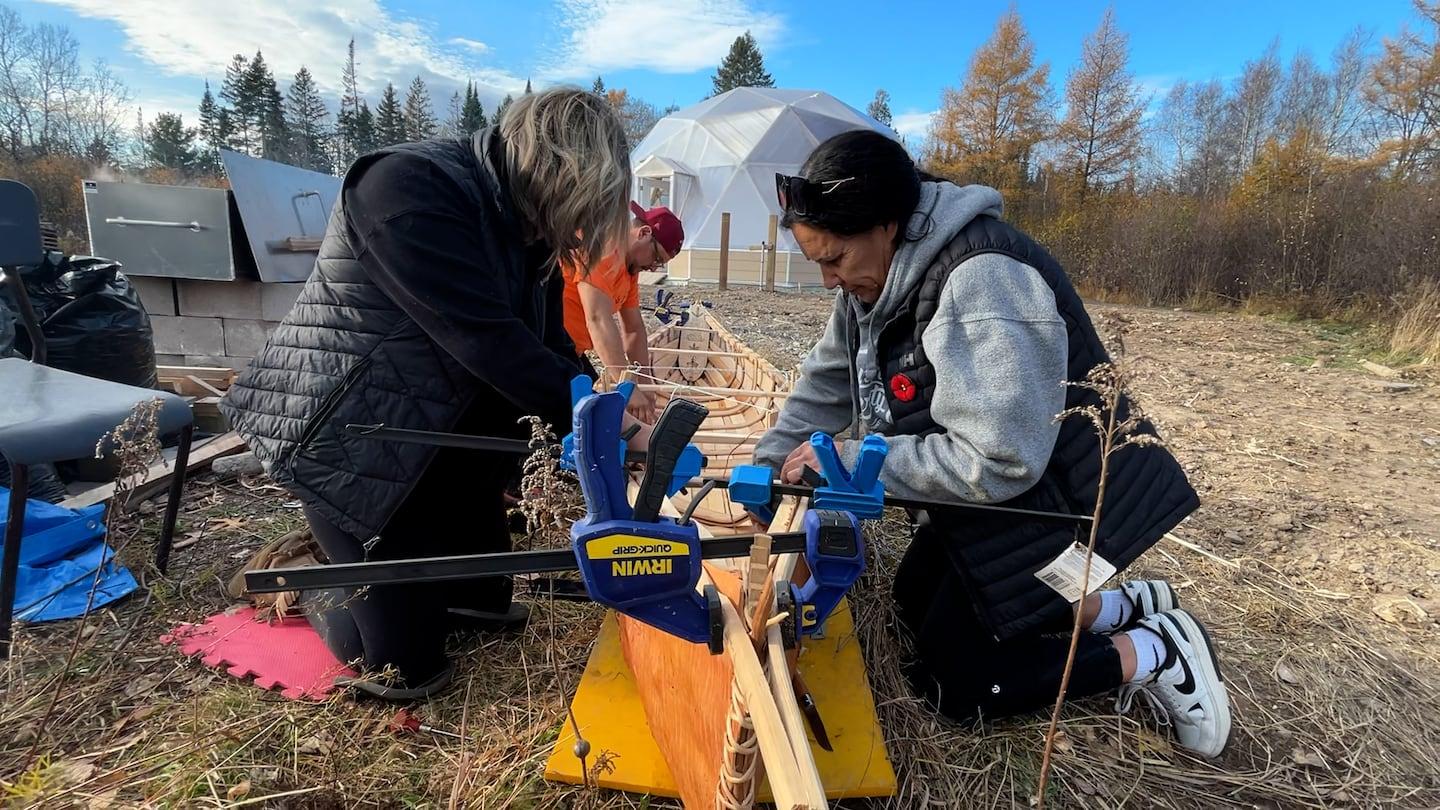Scroll For More

Score (97)
Wild Mustangs and Veterans: A Healing Bond at Wyoming Ranch
In the quiet town of Jay Em, Wyoming, a unique program is transforming lives by pairing veterans with wild mustangs. Operation Remount Corporation offers equine therapy to veterans and first responders, providing a path to healing for both humans and horses. Veterans often face mental health challenges, with data from the U.S. Department of Veterans Affairs indicating higher rates of PTSD, depression, and anxiety compared to civilians. Approximately 6,000 veterans die by suicide each year. Operation Remount co-founder Karen Alexander explains that many mustangs in the program have also experienced trauma. "These are mustangs that went through three adoptions and were not accepted or not adopted," she said. "When the mustangs first come, they are very afraid of humans." Veteran Sean Walker is among this year's participants. After serving two tours in Iraq and one in Bosnia with the Kansas National Guard, he found reintegrating into civilian life challenging. Meeting his horse Spirit has been transformative. "We call him Enduring Spirit Wind," Walker said. "He's taught me probably more than I could have possibly taught him." The program recently added a new cabin in honor of Marine Corps Sgt. B.J. Shepperson, who struggled with civilian life after deployments. Operation Remount plans to expand its facilities to accommodate more participants year-round despite Wyoming's harsh winters. "It’s like when you found a connection that you’ve lost," Walker said about his bond with Spirit. Participants can keep their horse after completing the six-week course, fostering lasting connections beyond their time at Operation Remount.

Score (98)
Three Dads Walk Over 1,500 Miles To Honor Late Daughters And Raise Millions For Suicide Prevention Charity
Warning ⚠️ This story mentions suicide, grief, and healing, which may be hard for some readers. If you need support, it is okay to pause and reach out to someone you trust or a local crisis line; you are not alone. For three British fathers, grief has turned into purpose — and thousands of miles of healing. Since 2021, Tim Owen, Mike Palmer, and Andy Airey have walked more than 1,500 miles together across the United Kingdom. They met under devastating circumstances, after each lost a daughter — Emily, Beth, and Sophie — to suicide. Their connection began through Papyrus, a suicide prevention charity that offered support to their families. Once they’d begun to heal, the three men decided they wanted to give something back. Palmer suggested a charity walk that would link their three homes and raise awareness for suicide prevention. That first walk spanned 300 miles over 15 days. They carried photos of their daughters on their backpacks and shared stories about them along the way. Donations poured in, and so did calls to Papyrus — which rose 20 percent during the campaign. “Mums are the emotional managers in the family, but because we’ve been open about what’s happened, dads started to phone up [too],” Airey told the Daily Mail. “I was really proud.” Their message was simple: suicide prevention isn’t just a cause, it’s a conversation — and it’s one men need to be part of. In the years since, the trio, now known as “3 Dads Walking,” have made an annual tradition of their treks, each one longer and more ambitious than the last. In April 2024, they walked 500 miles from Scotland to Norwich. That summer, they tackled the 130-mile Ynys Môn/Anglesey Coastal Path in Wales. Their efforts have raised over £1.5 million (about $1.96 million USD) for Papyrus. The impact has been huge: the charity has opened 13 new centers and now runs a 24-hour helpline to support people in crisis. But their greatest accomplishment may be what they’ve given each other. In the beginning, all three men struggled with suicidal thoughts of their own. Through their friendship — and the long miles walked together — they’ve built a lifeline for themselves as well as others. “We made a pact that if we were feeling bad, we’d call,” Owen said. “No matter what time of day.” Their walks continue to inspire families across the UK, offering proof that even the deepest grief can lead somewhere hopeful — one step, and one story, at a time.

Score (98)
How This Community is Embracing a Weekly Bike Bus Tradition to School
Every Friday morning in Montclair, New Jersey, the streets come alive with the sound of spinning wheels and cheerful chatter. What began as five parents looking for a safer way to bike their kids to school has grown into a full-blown community movement — a “bike bus” that now attracts more than 350 riders each week. Students wearing backpacks and helmets meet at neighborhood gathering spots, where volunteers in orange safety vests guide the way along a carefully planned 5-mile route. As the group pedals toward local elementary and middle schools, more families join at each stop. By the time they reach the final school, the group can stretch nearly 400 strong. “It was so fun,” said Gigi Drucker, a student at Nishuane Elementary School. “The best way to get to school is by bike because it gives you more exercise. It’s healthier for the Earth.” The Montclair Bike Bus has become more than just a weekly ride — it’s a symbol of what happens when a simple idea brings people together. Organizers like Jessica Tillyer say the goal is as much about building community as it is about encouraging healthy habits. “It really started because a small group of us...just felt like it wasn’t safe,” Tillyer said. “And for me, I felt kind of lonely riding by myself to school. So, bike bus just took off as a small effort. And now we can have up to 400 people riding together to school.” Montclair is just one of hundreds of communities around the world embracing the bike bus model. According to Bike Bus World, there are now over 400 active routes in places like the U.S., Brazil, India, Australia, and Europe. The concept is simple: kids and parents ride together to school in a group, making the journey safer and more social. “Children and families are craving community and physical activity and being outdoors,” said Sam Balto, co-founder of Bike Bus World and leader of a popular route in Portland, Oregon. “When you present that versus a school car line, people naturally gravitate to something that’s super joyful and community-driven.” In Montclair, that joy is contagious. Gene Gykoff, a local parent, says the weekly ride is the one day his son wants to get out of bed early. “He’s more excited to get out of bed for the bike bus than for the regular bus.” Keeping it going year-round takes planning. Volunteers monitor weather forecasts, communicate with families, and make sure everyone is dressed for cold or rainy conditions. The group also secured reflective vests and bike lights to improve safety during darker winter mornings. “We tell everyone to make sure they have the right gear — gloves, neck warmers, warm jackets,” said Andrew Hawkins, another organizer. “The idea is that kids should feel comfortable riding all year.” Each ride is carefully paced to accommodate young riders, typically cruising at 6 miles per hour. The route includes low-traffic streets and staggered starting points so kids of all ages can safely join in. And when the seasons change, the group adapts. Organizers host themed weekend rides and holiday events, giving more families a chance to experience the bike bus before committing to weekly participation. They also keep communication flowing through group chats, PTA announcements, and social media updates. While organizing such an event takes coordination, Balto and Tillyer agree that the key is to start small — even just two families riding together. “Don’t ask for permission,” Tillyer said. “Don’t worry about what it’s going to take. Find a small group of people, get on your bikes and ride to school. Once people experience it and enjoy it, more will want to join.” The end goal, organizers say, isn’t just getting more kids on bikes — it’s about changing how cities think about transportation. Bike bus leaders hope the growing popularity of group rides will push local governments to invest in safer biking infrastructure. Until then, Montclair’s families are leading by example — proving that with a little organization and a lot of enthusiasm, something as routine as a school commute can become the best part of the week.

Score (97)
Unlikely Duo Celebrates 10th Thanksgiving After Mistaken Text, Shares Favorite Recipe
What started with a wrong number has now turned into a decade-long Thanksgiving tradition — and a heartfelt reminder of how unexpected connections can grow into something lasting. In 2016, Arizona grandmother Wanda Dench was texting out Thanksgiving dinner plans to her six grandchildren when she accidentally sent a message to Jamal Hinton, then a 16-year-old stranger sitting in class. Hinton realized the mix-up but jokingly replied, “Can I still get a plate?” Dench’s response? “Of course you can. That’s what grandmas do…feed everyone!” And she meant it. That year, Hinton joined her for Thanksgiving dinner — and he’s been showing up ever since. “It’s not really a friendship. We’re more a family now,” Hinton told CNN. “It means the world. We talk about anything. We go through everything together.” Over the past ten years, their bond has only deepened. When Dench’s husband Lonnie passed away from COVID-19 in 2020, Hinton was by her side. This year, despite Dench undergoing chemotherapy for breast cancer, the tradition continued — just virtually. Hinton FaceTimed her so they could still share a meal, even from afar. “I was looking so forward to meeting his family and having turkey with everybody,” Dench said. “But we have to accept things the way they are, and I’m sure next year is going to be so much better.” To mark their 10th Thanksgiving together, Dench and Hinton partnered with Green Giant to share one of their favorite holiday dishes: a green bean casserole recipe that’s been part of countless American tables for generations. “Wanda and I are thrilled to celebrate our 10th Thanksgiving together, and partnering with Green Giant makes it even more special,” Hinton said in a press release. “We’re excited to make new memories with their vegetables at our table.” “I can’t believe it’s been 10 years since that mistaken text,” Dench added. “For us, the holidays are all about connections and making memories. Sharing our 10th year – alongside Green Giant’s 100th anniversary – makes this year feel especially meaningful.” Want to try their “Best Ever Green Bean Casserole”? Serves: 6 Prep time: 10 minutes Cook time: 21 minutes Ingredients: 2 tablespoons unsalted butter 8 ounces sliced cremini mushrooms 2 garlic cloves, minced 4 ounces cream cheese, cubed ½ cup whole milk ½ cup chicken broth ½ teaspoon dried thyme ½ teaspoon salt ¼ teaspoon pepper 2 cans (15 oz each) Green Giant Cut Green Beans, drained 1 cup crispy French-fried onions Instructions: Preheat oven to 375°F. In a large pan, heat butter over medium. Add mushrooms and sauté for 5 minutes. Add garlic and cook 1 more minute. Stir in cream cheese, milk, chicken broth, thyme, salt, and pepper. Cook, stirring constantly, until the cream cheese melts and the sauce is bubbling (about 3 minutes). Turn off heat. Stir in green beans until coated. Pour into a 2-quart casserole dish. Top with fried onions. Bake for 10–12 minutes until onions are golden brown. It’s a classic dish with a story that’s anything but ordinary — just like the friendship behind it.

Score (96)
World's First Snowy 'Hamster Wheel' For Skiers Unveiled In Endless Mountain Adventure
A high-tech twist on alpine adventure is on the horizon — and it looks a lot like a giant snow-filled hamster wheel. A startup based in Australia has unveiled plans for the world’s first Snowtunnel Park, a massive rotating tunnel lined with real powder snow and designed to bring year-round skiing and snowboarding to urban centers. Standing 12.5 meters tall — about the height of a four-storey building — the Snowtunnel spins continuously, offering riders an “endless mountain” of fresh snow to carve. At 16 meters wide, it mimics the width of a typical ski run, with over 600 square meters of constantly rideable surface area. “Our mission is to unlock the magic of snow and ignite a passion for alpine experiences for everyone, all year round,” said Scott Kessler, CEO and co-founder of Snowtunnel Parks. Made with real snow produced from just water and air, the Snowtunnel promises to deliver a consistent and safe riding experience in any season. The surface speed can be adjusted to accommodate everyone from first-timers to seasoned skiers. The first full-scale park is set to open in Australia in 2027, with additional sites planned in Melbourne, Sydney, Brisbane, and eventually capital cities around the globe. The team behind the project — Kessler, managing director Chris Northwood, and COO Dan Portelli — say they drew inspiration from their own experience growing up with unpredictable snow seasons in Australia. “We still get excited seeing the first snowflakes on the ground,” Northwood and Portelli said. “But we want everyone to experience that thrill of alpine adventure by bringing the snow to city-based adventure-seekers.” Each Snowtunnel venue will include over 3,000 square meters of snow play, learning, and riding zones, covered in more than 900 cubic meters of snow. The company says the total construction cost per venue will range between £10.4 million and £13 million — less than half the cost of most surf parks and significantly cheaper than large indoor snow slope developments. Snowtunnel has already built and tested a 10-meter proof-of-concept tunnel, with successful early investment rounds under its belt. The company is now launching an open capital round to fund its first commercial site. “What wave parks did for surfing, Snowtunnel will do for snow sports,” Kessler said. “From indoor climbing to skydiving to golf simulators, adventure sports are evolving fast. This is the next frontier.”

Score (96)
Movember Kicks Off, Urges Action for Men's Health Awareness
Every November, moustaches sprout up across Canada — but it’s not just about facial hair. Movember, now in its 19th year, has grown into a global movement focused on improving men’s health. What began as a campaign to raise money for prostate cancer research has evolved into a much broader effort, tackling everything from mental health to suicide prevention to the rising impact of opioid overdoses. “When we think about men’s health today, in 2025, there are a lot of big questions,” said Catherine Corriveau, director of policy and advocacy at Movember Canada, during an interview on CTV Your Morning Ottawa. “I think one of them is what it means to be a man, which has changed a lot since we started as an organization almost two decades ago.” Corriveau said men’s health doesn’t exist in a vacuum — it affects families, workplaces, and communities. And it comes with a real cost. “Too many men are dying too young in Canada, largely of preventable causes,” she said. “In 2023, that was 75,000 men who died prematurely, before the age of 75.” A report released by Movember Canada in June laid out the scale of the problem. It found men in Canada are: 12% more likely than women to die prematurely from cancer 135% more likely to die from coronary heart disease 153% more likely to die from accidents Three times more likely to die by suicide “The level at which men are dying… two out of five won’t make it to 75, which is a jarring number,” Corriveau said. “Suicide is a huge problem for men. It’s the second-leading cause of death of men ages 15 to 44. It’s also really expensive. It costs Canadian taxpayers $12.4 billion in one year.” That’s part of why Movember is calling for systemic change — not just in medical treatment, but in how society talks about masculinity, vulnerability, and health care access. Still, the moustache remains central to the campaign’s identity. “Growing your mo’ is still the best way to get involved,” Corriveau said. “You can grow your moustache, you can move your body, you can donate, you can host a ‘Mo-ment.’ You can start today. We all have a brother, a cousin, a loved one, a father. This is for everyone.” This year, participants are encouraged to run or walk 60 kilometres during the month of November — one kilometre for every man lost to suicide around the world every hour. And if growing a moustache isn’t your thing, hosting a “Mo-ment” is another option: gathering friends, raising awareness, and helping men feel less alone.

Score (97)
A Breakthrough Map Just Revealed How The Brain Really Works
The brain’s wiring may hold the key to understanding how it works — and new research shows just how deep that link goes. In a study published in Network Neuroscience, researchers at The Ohio State University found that the complex web of connections between brain regions can reliably predict what each area does. Their findings provide some of the strongest evidence yet that brain connectivity is not just associated with function — it’s a core principle behind how the brain is organized. “We found evidence suggesting that connectivity is a fundamental organizational principle governing brain function,” said lead author Kelly Hiersche, a doctoral student in psychology. “This has implications for understanding what happens when things go wrong in the brain.” The team analyzed data from the Human Connectome Project, which includes MRI scans from over 1,000 participants. These scans map how different regions of the brain communicate — essentially, its wiring diagram. They then used an online tool called NeuroQuery, which pulls from thousands of neuroscience studies to map brain activity patterns across 33 mental functions, including speech, memory, decision making, and face recognition. By combining these maps with the MRI data, the researchers created models showing how connectivity patterns are linked to specific cognitive functions. “Just like how everyone's fingerprint is unique, we find that different brain regions have uniquely identifying connectivity fingerprints based on what mental function they perform,” said Zeynep Saygin, co-author and associate professor of psychology. In other words, by examining how a particular region is connected to the rest of the brain, researchers could predict what that area does — whether it helps you remember something, recognize a face, or make a choice. “It supports a broadly held hypothesis among neuroscientists, that brain connectivity determines brain function,” said senior author David Osher. “But this has not been explicitly shown until now, and not across such a large breadth of cognitive domains.” The relationship held true across the brain, but was especially strong in regions tied to complex mental tasks like executive function and memory — areas that take longer to develop and mature than sensory or motor regions. “These higher-level skills take many years to develop in people,” Hiersche said. “It may be that as you continually use these regions of the brain for them to develop, it results in this very tight link between connectivity and function.” The study not only strengthens the case that function follows wiring, but also provides a new reference point for brain research. The team’s models now serve as a baseline for how healthy young adult brains typically operate. Future research can use these benchmarks to identify what’s different in brains affected by neurological or psychiatric disorders. “Knowing that connectivity is a general organizational principle of brain function across the entire brain provides a foundation for future work in this area,” Hiersche said.

Score (97)
Maya Monument Reveals Ancient Cosmological Design Without Social Hierarchy
A massive ancient structure in southern Mexico is rewriting what we thought we knew about early Maya civilization — and about how monumental projects can get done. Archaeologists have revealed that Aguada Fénix, a 3,000-year-old site first discovered in 2020, is not only far larger than originally believed, but was built as a cosmogram — a map of the universe carved into the Earth. What’s more, it was constructed without signs of kings, elite residences, or forced labor. “It was not like that,” said Takeshi Inomata, the University of Arizona archaeologist who led the study. “We don't need really big social inequality to achieve important things.” The findings, published in Science Advances, are based on new LIDAR scans and fieldwork that show Aguada Fénix to be a sprawling ceremonial complex laid out in the shape of a nested cross. Its central hub, built on an artificial plateau, features two cross-shaped pits that mirror the larger layout. From this center, long ceremonial corridors stretch as far as 9 kilometers, with paired causeways leading the way — likely paths for ritual processions. The team estimates it took 10.8 million person-days to build the Main Plateau, and another 255,000 person-days to construct a canal and dam system that was never completed. But perhaps most remarkable is what the site lacks: there’s no evidence of palaces, royal tombs, or sculptures of rulers. No signs of coercive labor. And yet, the project was massive. “Along with the appeals of collective ceremonies, feasting, and the exchange of goods, the construction of a cosmogram, materializing the order of the Universe, likely provided a rationale for a large number of people to participate without coercive force,” the researchers wrote. The site, located in Tabasco near the Gulf of Mexico, was hiding in plain sight — not buried deep in jungle, but under a populated area. It had already been named the largest Maya site ever discovered when LIDAR surveys in 2020 showed it stretched 1.4 kilometers. Now, new scans reveal the full ceremonial axis measures 9 kilometers long by 7.5 kilometers wide. At the heart of the site, archaeologists uncovered pigment deposits placed in precise cardinal directions: blue azurite in the north, green malachite in the east, and yellow ochre in the south. These pigments, found in the central cross-shaped pits, represent the earliest known use of Mesoamerican directional color symbolism — a tradition that would become central to later Maya cosmology. “We’ve known that there are specific colors associated with specific directions,” said Inomata. “But we never had actual pigment placed in this way. This is the first case that we’ve found those pigments associated with each specific direction.” Inside the same pits were offerings of seashells and delicately carved jade and greenstone figurines — crocodiles, birds, and a woman giving birth — arranged in the same cross-shaped pattern. The placement appears deliberate, with shells denoting water and aligning with the site’s broader cosmic symbolism. Around the western axis of the site, construction had begun on a canal system, suggesting that water held ritual importance. But the canals were left unfinished, likely due to technical or organizational limitations — a sign that even highly motivated communities hit natural limits. Even so, the achievements of the builders remain staggering. Construction began between 1050 and 700 BCE, during a period when most scholars assumed complex projects required centralized, hierarchical leadership. This site says otherwise. “It exemplifies the capabilities of human organization without prominent inequality,” the team writes. In other words, massive, coordinated public works are possible even in egalitarian societies — driven not by power, but by shared purpose. Inomata hopes the discovery will help change assumptions about how big things get done, both in the past and today. “People have this idea that certain things happened in the past — that there were kings, and kings built the pyramids,” he said. “But once you see the actual data from the past, it was not like that.”

Score (97)
He Raised £16,000 for Charity by Pulling a Van Nonstop for 24 Hours
For 24 hours straight, Mike Land hauled a 1.5-tonne van around an industrial unit near Chippenham — raising an impressive £16,000 for Wiltshire Air Ambulance in the process. The 55-year-old charity champion completed 76 laps around the 31,935-square-metre facility, walking a total of 30 miles (49 kilometres) while pulling a van that weighed as much as an Asian elephant. His effort came just 2 kilometres shy of a Guinness World Record. “It has been a struggle with fuel, water and getting around the laps. But it's also been amazing with all the support,” Land said after finishing the challenge on Wednesday at 12:00 GMT. The fundraiser lasted from midday Tuesday to midday Wednesday, with Land taking only short breaks for food and toilet stops. He didn't sleep. What he did do was keep going — even as the unseasonably warm temperatures inside the warehouse started to wear him down. "It started off fine. But then we realised how warm this lovely big unit gets in the daytime," he said. “I spent a lot of time topless trying to stay cool and we opened every door and window we could.” By the end, he was exhausted but proud — and shared an emotional hug with family after catching his breath. His partner Sue French, who supported him throughout the campaign, said she was “so proud.” "He's worked so hard at bringing together companies locally to get funding and support,” she said. “The man is constantly out gaining funds for the air ambulance." The £16,000 raised is enough to fund four potentially life-saving air ambulance missions. That kind of impact wasn’t lost on the charity’s corporate fundraiser, Imogen Linham, who helped cheer Land on during his marathon effort. “It's been absolutely epic, we are so proud of Mike,” Linham said. “He's done an absolutely incredible job and it's amazing to feel part of something so special. The money raised goes straight towards the life saving work we do.” Although Land fell just short of setting a world record, he says he’s likely done for now. "The thought of me doing this again at 56 scares the hell out of Sue,” he joked. “I think we'll probably draw a line under it for now.”
%3Afocal(750x500%3A751x501)%2Fhttps%3A%2F%2Ftf-cmsv2-smithsonianmag-media.s3.amazonaws.com%2Ffiler_public%2F7c%2F94%2F7c940cae-dbe3-4c70-a5ba-9908b14de648%2F15009.jpg&w=3840&q=75)
Score (97)
Park Walks May Slow Cognitive Decline In Alzheimer's Risk Individuals
A new study suggests that even modest amounts of walking may help slow the progression of Alzheimer’s disease — a potentially game-changing insight for millions of older adults. The research, published November 3 in Nature Medicine, tracked nearly 300 adults between the ages of 50 and 90, all of whom were at risk for Alzheimer’s but showed no cognitive symptoms at the start of the study. The team found that walking between 3,000 and 7,500 steps a day was linked to slower buildup of tau proteins in the brain — a key marker of Alzheimer’s — and delayed cognitive decline. “The very encouraging takeaway is that even a little bit of exercise seems to help,” said Wai-Ying Wendy Yau, the study’s lead author and a neurologist at Harvard Medical School, in an interview with Nature. Participants who walked 3,000 to 5,000 steps per day delayed the onset of cognitive symptoms by an average of three years. Those walking 5,000 to 7,500 steps per day saw an even greater benefit — an average delay of seven years. Researchers used waistband pedometers to track physical activity and conducted annual cognitive tests for an average of 9.3 years. Some participants also underwent periodic PET scans to monitor tau and amyloid-beta, another protein associated with Alzheimer’s. These proteins tend to accumulate in the brains of those at higher risk for the disease, often years before symptoms appear. The study found a clear pattern: people with high amyloid-beta levels who were more active had significantly less buildup of tau proteins over time, and their thinking and daily functioning declined more slowly. “[Exercise is] somehow slowing the spread of this tau protein, which is more strongly associated with people developing symptoms [of Alzheimer’s disease] than amyloid-beta,” Charles Marshall, a dementia researcher at Queen Mary University of London who was not involved in the study, told New Scientist. By contrast, participants with high amyloid levels who were sedentary showed faster tau accumulation and more rapid cognitive decline. While the study does not prove that walking directly prevents Alzheimer’s — it only establishes a correlation — researchers say it offers promising insight into one of medicine’s biggest questions: why some at-risk individuals decline rapidly, while others remain cognitively stable for years. “We need randomized clinical trials to prove cause and effect, but it’s very encouraging that physical activity may help to modify someone’s trajectory,” Yau told The Guardian. For people with low baseline levels of amyloid-beta, the study found little effect from exercise, likely because they were not at significant risk for Alzheimer’s to begin with. Even so, the findings challenge the idea that people need to hit the 10,000-steps-a-day benchmark to benefit from exercise. That’s a number many older adults may struggle to reach — and according to Yau, they might not have to. “Other studies have shown that different types of physical activity, beyond walking, [are] beneficial for brain health,” she told The Washington Post. “An important next step to look at is to clarify what aspects of physical activity—intensity, duration, pattern—[are] the most important in preclinical Alzheimer’s disease.” Jasmeer Chhatwal, the study’s senior author and a neurologist at Massachusetts General Hospital, said the results help explain why some people with early signs of Alzheimer’s pathology don’t decline as quickly as expected. While more research is needed, one message is clear: moving your body — even a little — might help protect your brain.

Score (97)
Friendship Centre Revives Indigenous Wolastoqey Tradition by Building Birchbark Canoes
In a small workshop near the banks of the Wolastoq River in Fredericton, a group of Indigenous builders has spent the last several months piecing together more than just a canoe — they’re rebuilding a connection to their culture. Since May, members of the Under One Sky Friendship Centre have been gathering a few times a week to construct a traditional Wolastoqey birchbark canoe, using techniques that date back generations. On Wednesday morning, their work culminated in the launch of the handbuilt canoe into the Wolastoq, also known as the Saint John River. “I’ve always wanted to build a birchbark canoe,” said Rodney Bear, one of the builders. “The more I can soak up, the more I can teach so that our culture isn’t lost forever.” For Bear and others, this has been about more than craftsmanship. It’s a way to reconnect with history — a time when canoes were essential modes of transport and rivers were the highways of the land. Until now, Bear had never had the opportunity to make one himself. The project was led by artist Shane Perley-Dutcher, a Wolastoqiyik craftsman who’s worked on six canoes, two of which he’s led from start to finish. He doesn’t call himself a master builder, but to the team at Under One Sky, his experience has been key. “All these little elements kind of have to work together in order to make a nice, strong canoe,” he said. That includes birchbark for the canoe’s skin, cedar planks for the ribs, ash wood for the thwarts, and spruce roots for lashing everything together. The group harvested each piece themselves, learning the old ways of gathering and preparing materials directly from the land. To collect the birchbark, Perley-Dutcher invited Gabriel Frey, a Passamaquoddy canoe builder from Maine. Frey scaled nearly 10 metres up a birch tree to peel the bark — without harming the tree. “It was a such a great learning experience for us too,” Perley-Dutcher said. The project was funded by TD Bank and organized through Under One Sky’s Wabanaki Land Based Program, which offers cultural programming for Indigenous community members. For Amber Hawkins, the program’s Wabanaki Wellness Coordinator, the canoe has been deeply personal. “I grew up off-community, I never really had that connection to culture or Indigenous artwork. So this has been extremely transformative,” she said. Candy Paul, who leads the land-based program, said the team initially struggled to see how the raw materials would become a canoe. “But once it started to form, it was like, wow,” she said. “It was pretty amazing.” Charlie Gaffney, who oversees strategic enrollment and community engagement at the Friendship Centre, said the goal was never just about building a canoe — it was about rekindling knowledge that once shaped everyday life. “This was part of our culture, our understanding of how to navigate the rivers and to portage from one place to another,” he said. “Our life depended on these beautiful canoes.” For now, the newly finished canoe will be used by participants of the Wabanaki Land Based Program. But eventually, it will be displayed at Under One Sky’s new Centre, which is set to open in late 2026. Still, for many of the builders, the real takeaway isn’t the canoe itself — it’s the hands-on experience of creating it together. “I’m really looking forward to the end result and seeing the actual canoe touch water,” said Perley-Dutcher. The launch into the Wolastoq River took place at 11 a.m. on Wednesday. But the knowledge passed on throughout this process is what will carry the community forward — one generation at a time.